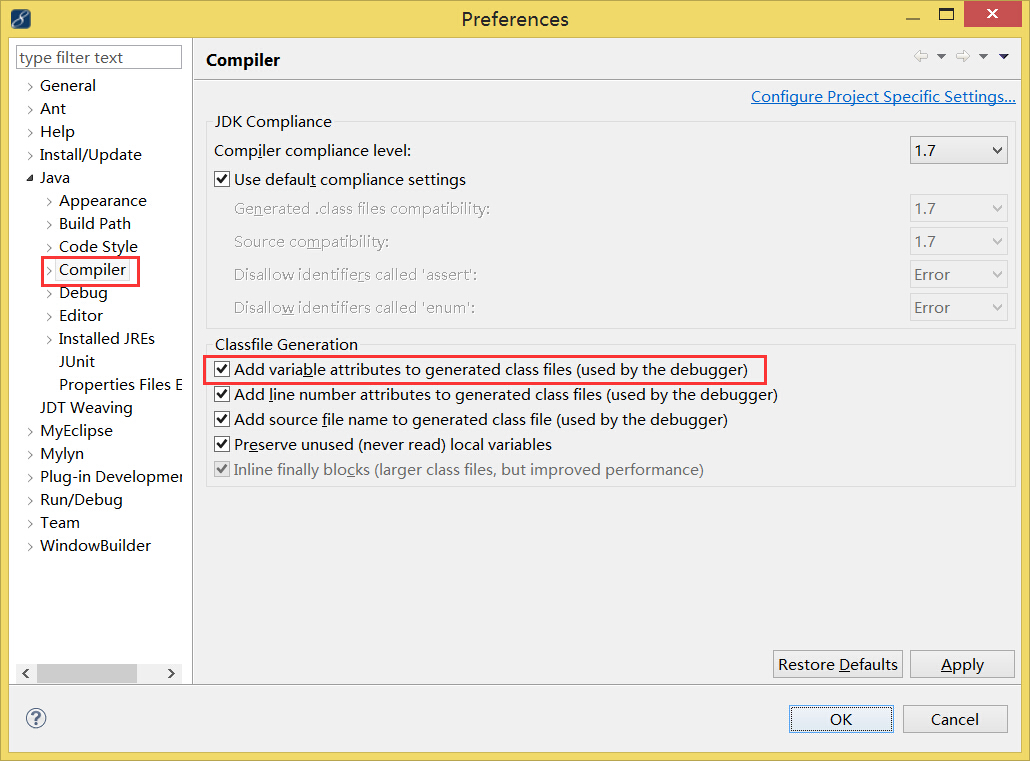Spring中argNames的含义
最近学习Spring,一直不太明白Srping的切面编程中的的argNames的含义,经过学习研究后,终于明白,分享一下
先看一个例子:
需要监控的类:
package bean; public class HelloApi { public void aspectTest(String a,String b){ System.out.println("in aspectTest:" + "a:" + a + ",b:" + b); } }
类HelloApi的aspectTest方法是需监控的方法,目标是调用前获取获得入参a和b的值,并打印出来。
切面类:
package aspect; import org.aspectj.lang.annotation.Aspect; import org.aspectj.lang.annotation.Before; import org.aspectj.lang.annotation.Pointcut; import org.springframework.stereotype.Component; import java.lang.String; @Component @Aspect public class HelloApiAspect2 { @Pointcut(value="execution(* bean.HelloApi.aspectTest(..)) && args(a1,b2)",argNames="a1,b2") public void pointcut1(String a1,String b2){} @Before(value="pointcut1(a,b)",argNames="a,b") public void beforecase1(String a,String b){ System.out.println("1 a:" + a +" b:" + b); }
//注意和beforecase1的区别是argNames的顺序交换了 @Before(value="pointcut1(a,b)",argNames="b,a") public void beforecase2(String a,String b){ System.out.println("2 a:" + a +" b:" + b); } }
测试类:
package UnitTest; import org.junit.Assert; import org.junit.Test; import org.springframework.beans.factory.BeanFactory; import org.springframework.context.support.ClassPathXmlApplicationContext; import bean.HelloApi; public class Test1 { @Test public void aspectjTest1(){ BeanFactory beanFactory = new ClassPathXmlApplicationContext("chapter2/aspectTest1.xml"); HelloApi helloapi1 = beanFactory.getBean("helloapi1",HelloApi.class); helloapi1.aspectTest("a", "b"); } }
Spring的配置文件aspectTest.xml:
<?xml version="1.0" encoding="UTF-8"?> <beans xmlns="http://www.springframework.org/schema/beans" xmlns:xsi="http://www.w3.org/2001/XMLSchema-instance" xmlns:p="http://www.springframework.org/schema/p" xmlns:util="http://www.springframework.org/schema/util" xmlns:context="http://www.springframework.org/schema/context" xmlns:aop="http://www.springframework.org/schema/aop" xsi:schemaLocation="http://www.springframework.org/schema/beans http://www.springframework.org/schema/beans/spring-beans-3.0.xsd http://www.springframework.org/schema/util http://www.springframework.org/schema/util/spring-util-3.0.xsd http://www.springframework.org/schema/context http://www.springframework.org/schema/context/spring-context-3.0.xsd http://www.springframework.org/schema/aop http://www.springframework.org/schema/aop/spring-aop-3.0.xsd"> <context:component-scan base-package="aspect"></context:component-scan> <bean id="helloapi1" class="bean.HelloApi"></bean> <aop:aspectj-autoproxy></aop:aspectj-autoproxy> </beans>
输出:
2 a:b b:a
1 a:a b:b
in aspectTest:a:a,b:b
说明:
HelloApiAspect2定义了一个切面pointcut,切面表达式是execution(* bean.HelloApi.aspectTest(..)) && args(a1,b2),表示配对bean.HelloApi.aspectTest()方法,并且传入参数是2个。
args(a1,b2)另外一个作用,就是定义了aspectTest(String a,String b)方法对应表达式args(a1,b2)。定义了args(a1,b2),才能把目标方法aspectTest的参数传入到切面方法beforecase1的参数中,a参数对应a1,b参数对应b2。使用的方法是按顺序一一对应,aspectTest第一个参数对args第一个参数,aspectTest第2个参数对args第2个参数.
argNames是可选的,如果没有argNames这个参数,而编译器设置了【在class文件生成变量调试信息】,则spring可以通过反射知道方法参数的名字,通过名字配对,Spring知道args(a1,b2)表达式里面的a1和b2,对应了pointcut1(String a1,String b2)方法里面的a1和b2。
目标方法和切入方法的参数的关系是这样确立的:aspectTest(String a,String b) 与 args(a1,b2)关系是a对a1,b对b2(),args(a1,b2)与pointcut1(String a1,String b2)关系是args的a1对pointcut1的a1,args的a2对pointcut1的a2。解决了目标方法参数传入到切入方法参数的问题。
但是,如果设置了argNames,Spring不再使用方法参数的名字来配对,使用argNames定义的顺序来定义pointcut1(String a1,String b2)的顺序,例如:argNames="a1,b2",a1在b2前面,表示pointcut1方法第一个参数是a1,第二个参数是b2。
既然不设置argNames,Spring可以根据参数名字进行配对,为什么还需要配置argNames?因为Spring要知道方法的参数名,编译器必须设置了【在class文件生成变量调试信息】,如果没有设置,Spring就不知道pointcut1方法的参数名了,这个时候,Spring只知道参数的类型,Spring会使用参数的类型进行配对,如果出现2个参数都是同一个类型的情况,就会报AmbiguousBindingException异常。
beforecase1和beforecase2的argNames设置的顺序交换了,调用beforecase1的顺序是beforecase1("a","b"),调用beforecase2的顺序是beforecase2("b","a"),所以最后的输出是
2 a:b b:a
1 a:a b:b
PS:
【class文件中生成变量调试信息】在myeclipse中打开windows-》preferences,设置如下:







【推荐】国内首个AI IDE,深度理解中文开发场景,立即下载体验Trae
【推荐】编程新体验,更懂你的AI,立即体验豆包MarsCode编程助手
【推荐】抖音旗下AI助手豆包,你的智能百科全书,全免费不限次数
【推荐】轻量又高性能的 SSH 工具 IShell:AI 加持,快人一步
· 从 HTTP 原因短语缺失研究 HTTP/2 和 HTTP/3 的设计差异
· AI与.NET技术实操系列:向量存储与相似性搜索在 .NET 中的实现
· 基于Microsoft.Extensions.AI核心库实现RAG应用
· Linux系列:如何用heaptrack跟踪.NET程序的非托管内存泄露
· 开发者必知的日志记录最佳实践
· winform 绘制太阳,地球,月球 运作规律
· TypeScript + Deepseek 打造卜卦网站:技术与玄学的结合
· AI 智能体引爆开源社区「GitHub 热点速览」
· 写一个简单的SQL生成工具
· Manus的开源复刻OpenManus初探